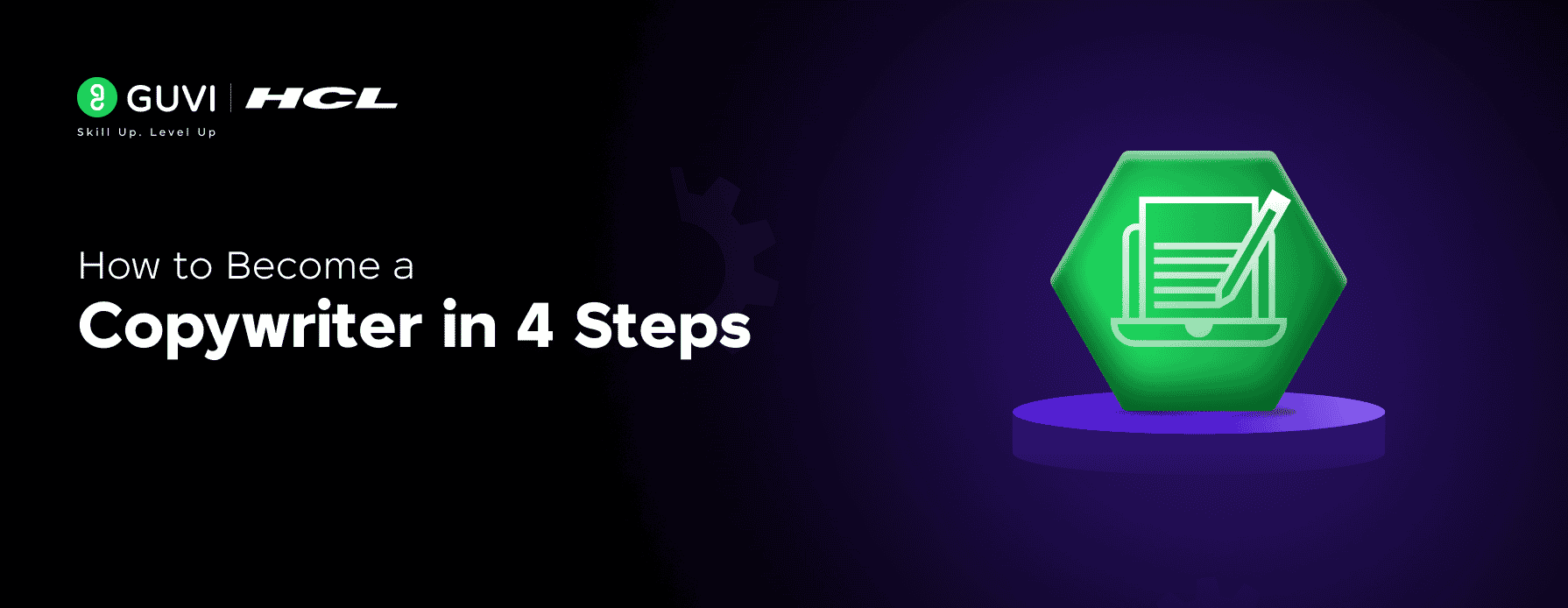
Are you interested in writing? Want to upgrade your writing skills and become a copywriter? You’ve reached the right place.
Due to the recent development of AI, the demand for skilled copywriters who can write persuasive, human-centered content has only grown. In this blog, we will look into the detailed steps to become a copywriter. Along the way, we will see the types of copywriting and the skills required to become a copywriter. Stay tuned!
Table of contents
- What is copywriting?
- Types of copywriting
- Skills Required to Become a Copywriter
- Steps to Become a Copywriter
- Step 1: Take a Copywriting Course
- Step 2: Practice Your Copywriting Skills
- Step 3: Create Your Portfolio
- Step 4: Find Your First Job or Client
- Conclusion
- FAQs
- Q1. Do I need a portfolio if I’m a beginner?
- Q2. What’s the difference between copywriting and content writing?
- Q3. Do I need a degree to become a copywriter?
- Q4. Can I be a freelance copywriter?
What is copywriting?
Copywriting is the occupation of writing persuasive content for sales, marketing, advertising, and publicity. Unlike general content writing, which aims to provide information or entertainment, copywriting is focused on driving sales and generating leads. Some of the copywriting examples include creating a sales page, product description, email campaigns, advertisements, landing pages, and taglines.
Types of copywriting
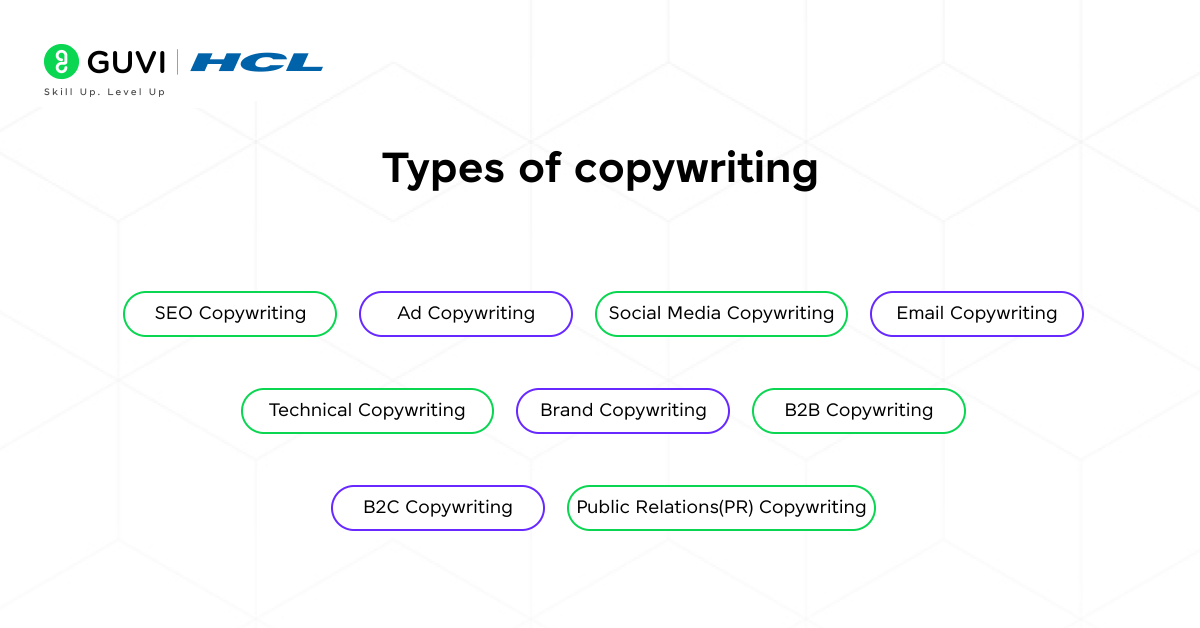
As we discussed earlier, copywriting includes various styles and purposes. Some of the types of copywriting are tailored to specific audiences and goals. Let’s look at the types of copywriting.
- SEO Copywriting: It targets people searching in online search engines using keywords. The goal of SEO copywriting is to increase the visibility of the website and attract organic traffic by ranking high in search results.
- Ad Copywriting: It speaks to potential customers on top platforms like Google and social media. Its purpose is to grab the attention of the customer quickly and drive immediate action in the form of clicks or purchases.
- Social Media Copywriting: It targets followers and users on social media such as Instagram, Facebook, X (Twitter), LinkedIn, and YouTube. The aim of this category is to boost engagement and keep the brand active and relevant.
- Email Copywriting: This is written for subscribers or existing customers in their inboxes. Its purpose is to build deep relationships, promote offers, and drive conversions through targeted emails.
- Technical Copywriting: This writing aims towards technical audiences like engineers, developers, or other professionals. Its purpose is to clearly explain the complex information, products, and services without losing any accuracy.
- Website Copywriting: It targets the people who visit a company’s website. The goal of this writing is to inform and guide visitors to take specific action, such as signing up or purchasing a product.
- Brand Copywriting: It addresses the general audience, especially those who are interested in brands. The purpose of this writing is to shape the brand’s identity and build an emotional connection with the customers through consistent messaging.
- B2B Copywriting: Business-to-Business is written for professionals and decision makers from one business to another business. It aims to provide solutions, demonstrate values, and make logical decisions.
- Public Relations(PR) Copywriting: This writing targets the media, stakeholders, and general public. Its purpose is to communicate with the public about important news or updates while maintaining a company’s image.
- B2C Copywriting: Business-to-Consumer focuses on individual consumers making personal purchases. Its goal is to connect with consumers emotionally and persuade quickly with benefit-driven messaging.
Ready to become a copywriter? Get started on your journey on HCL Guvi with a FREE E-book on Digital Marketing. This is the first step towards your end goal. This E-book will provide you with a detailed roadmap towards Digital Marketing, which includes SEO optimization techniques, Content marketing, social media marketing, email marketing, paid ads, analytics, emerging trends, and case studies along with their applications in the real world.
Skills Required to Become a Copywriter
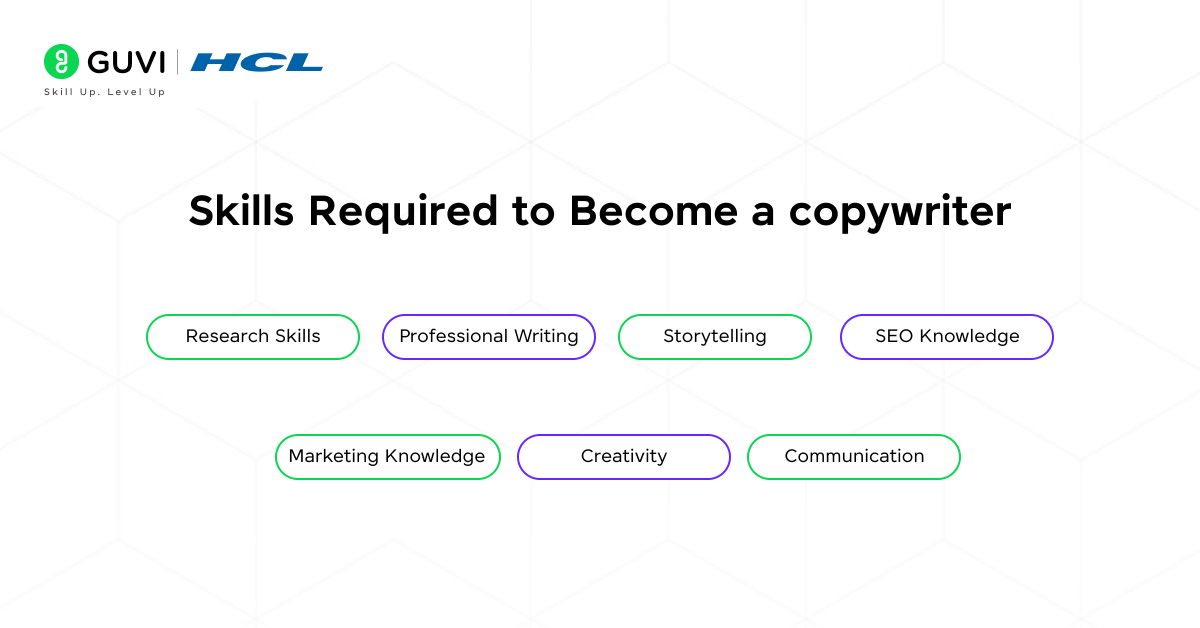
Copywriting is full of writing, editing, and storytelling. Let’s look into some of the skills required to become a copywriter.
- Research Skills: Research helps to find the target audience preferences and recent trends to create content accordingly.
- Professional Writing: Exceptional writing skills are the foundation for copywriting. A copywriter should be able to persuade the audience through their writing.
- Editing and Proofreading: Accurate and clear content is crucial for the audience to understand. Proofreading and editing skills help you to polish your writing.
- Storytelling: This skill helps in crafting a compelling narrative that completely resonates with your audience.
- SEO Knowledge: It helps in understanding how to optimize your content for search engines. This is a crucial skill for content visibility and reach.
- Marketing Knowledge: Having a familiarity with marketing principles and strategies is essential for creating effective copywriting content for your business marketing goals.
- Creativity: Creativity plays a major role in developing unique and engaging content for different audiences and making it stand out from the competitors.
- Communication: This is important to communicate effectively with the clients, managers and other team members.
Now that we know the skills required for a copywriter. In the next section, we will look into the 4 steps to becoming a copywriter in detail.
Steps to Become a Copywriter
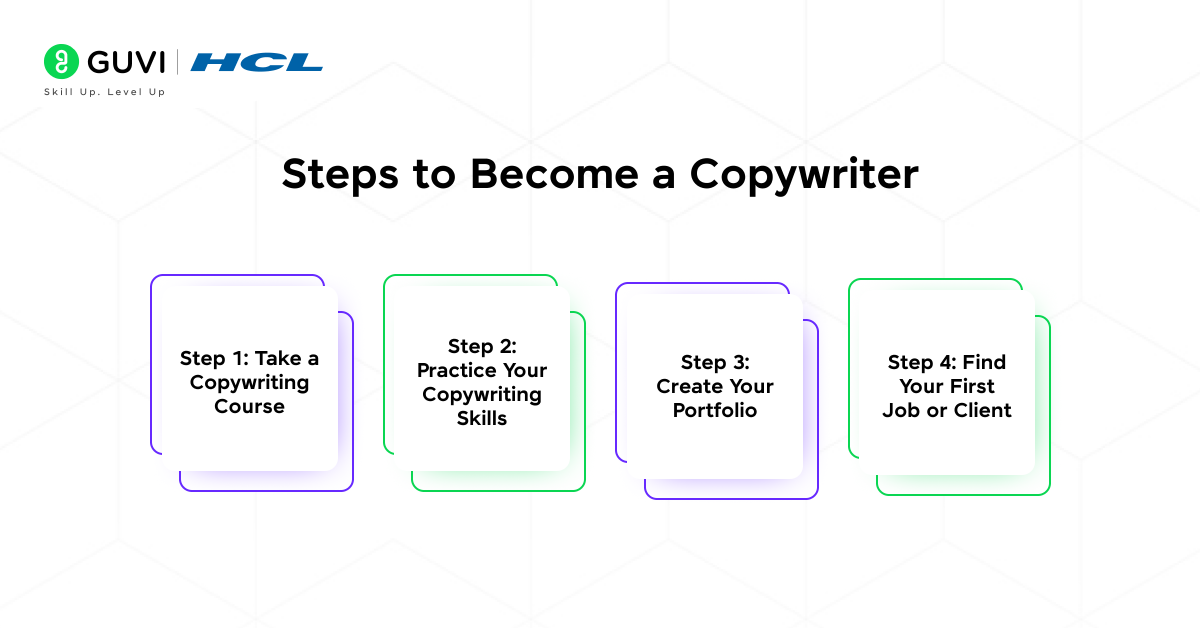
This section covers the steps to become a copywriter, from learning skills to finding your first job or client, along with the necessary resources. Let’s dive deeper into it.
Step 1: Take a Copywriting Course
The first step towards your copywriting career is to take a course on copywriting. There are many ways you can learn the listed copywriting skills, but the fastest and proven way is to take a copywriting course. This will teach you the basics of copywriting, the tools required, best practices, and strategies in a short amount of time. You can also take up any bootcamps related to copywriting.
Copywriting is a subset of digital marketing; having a decent knowledge of digital marketing will benefit you a lot in taking up the advanced courses and techniques. To get started with digital marketing, HCL Guvi’s Meta Certified Advanced Digital Marketing Course will be a great start. This course teaches you how to create and manage paid Meta and Google ads, effectively use SEO, email marketing, online brand management, and AI tools.
Step 2: Practice Your Copywriting Skills
Once you have learned the necessary skills, the next step is to practice your writing skills. You can start practicing by writing your blogs on platforms like Medium, Dev.to and Hashnodes. After that, look for copywriting internship opportunities in job listing platforms such as LinkedIn and HCL Guvi Jobs.
Internships provide you with practical experience on marketing strategies, copywriting techniques, and do’s and don’ts of copywriting. You can focus on getting internships in roles like content writing, lead generation, copywriting, and digital marketing.
Step 3: Create Your Portfolio
The third step is to create your portfolio. Once you have gained a little experience in copywriting, it’s time to show what you can provide by creating a portfolio that highlights your skills. A portfolio is a professional showcase that helps clients or employers to quickly understand your writing skills, styles, and expertise.
Start your portfolio by including 4 to 6 strong sample projects that demonstrate a variety of copywriting types, such as website, product description, email campaigns, social media posts, and ads. Make sure to display the contents of your portfolio clean, professional, and easy to navigate.
Step 4: Find Your First Job or Client
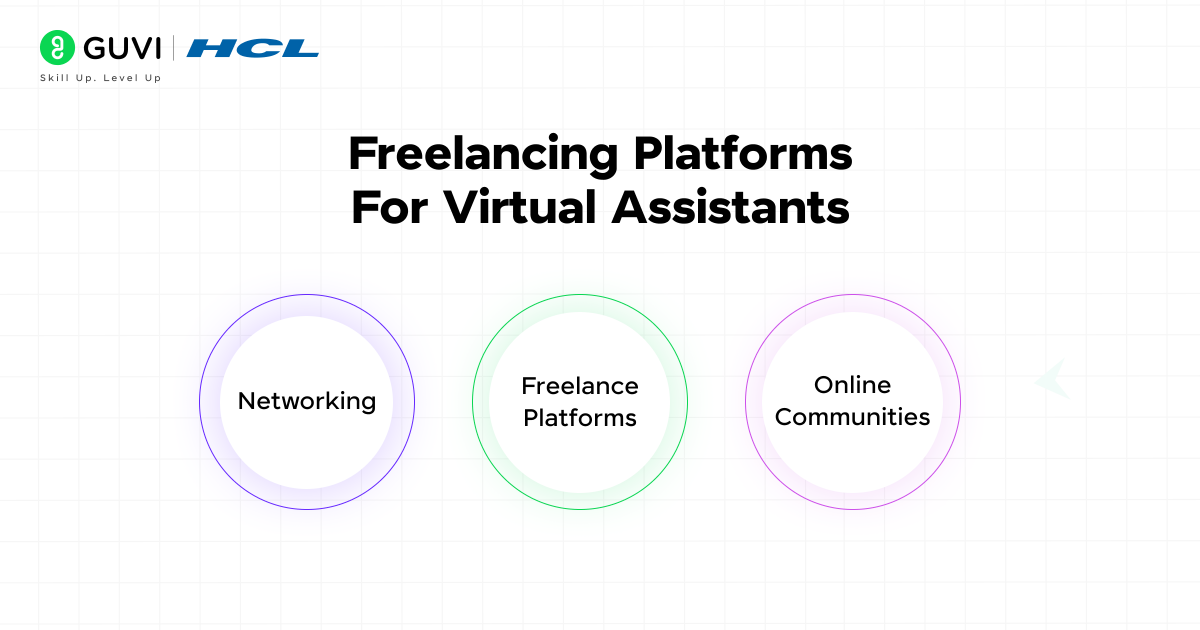
Once you are all set, the next step is to find your first client. Landing your first client can feel like the hardest part to become a copywriter. There are many ways and platforms where you can get your first client. Some of them are:
- Networking: As an initial step of finding your client, start by letting people around you know what you’re offering.
- Freelance Platforms: Creating a gig on freelancing platforms mentioned above helps you to get your first client. Highlight your niche, services, skills, and experience.
- Online Communities: There are more online communities and forums where business owners post job leads, and virtual assistants can connect with potential clients.
Try to use all of these resources to post your services and initially offer a starter package to attract your first clients. To find your first full-time job, apply in a careers portal with your well-structured resume and portfolio website. Make sure your resume and portfolio website are up to date with your recent activities. Connect with like-minded people on LinkedIn and ask for referrals.
Conclusion
By following these 4 steps, you can easily become a copywriter. Be consistent and confident throughout the process. Focus on a specific type of copywriting and practice to become an expert in that particular domain. Once you get good at your domain, try to expand your service into various domains. Happy Learning!
FAQs
Q1. Do I need a portfolio if I’m a beginner?
Yes, even a beginner portfolio with mock projects can showcase your skills and writing style.
Q2. What’s the difference between copywriting and content writing?
Copywriting aims to sell or convert, while content writing focuses more on informing, educating, or entertaining.
Q3. Do I need a degree to become a copywriter?
No, formal education isn’t required—skills, a strong portfolio, and real results matter more.
Q4. Can I be a freelance copywriter?
Yes! Many copywriters work as freelancers and choose their clients, projects, and schedules.


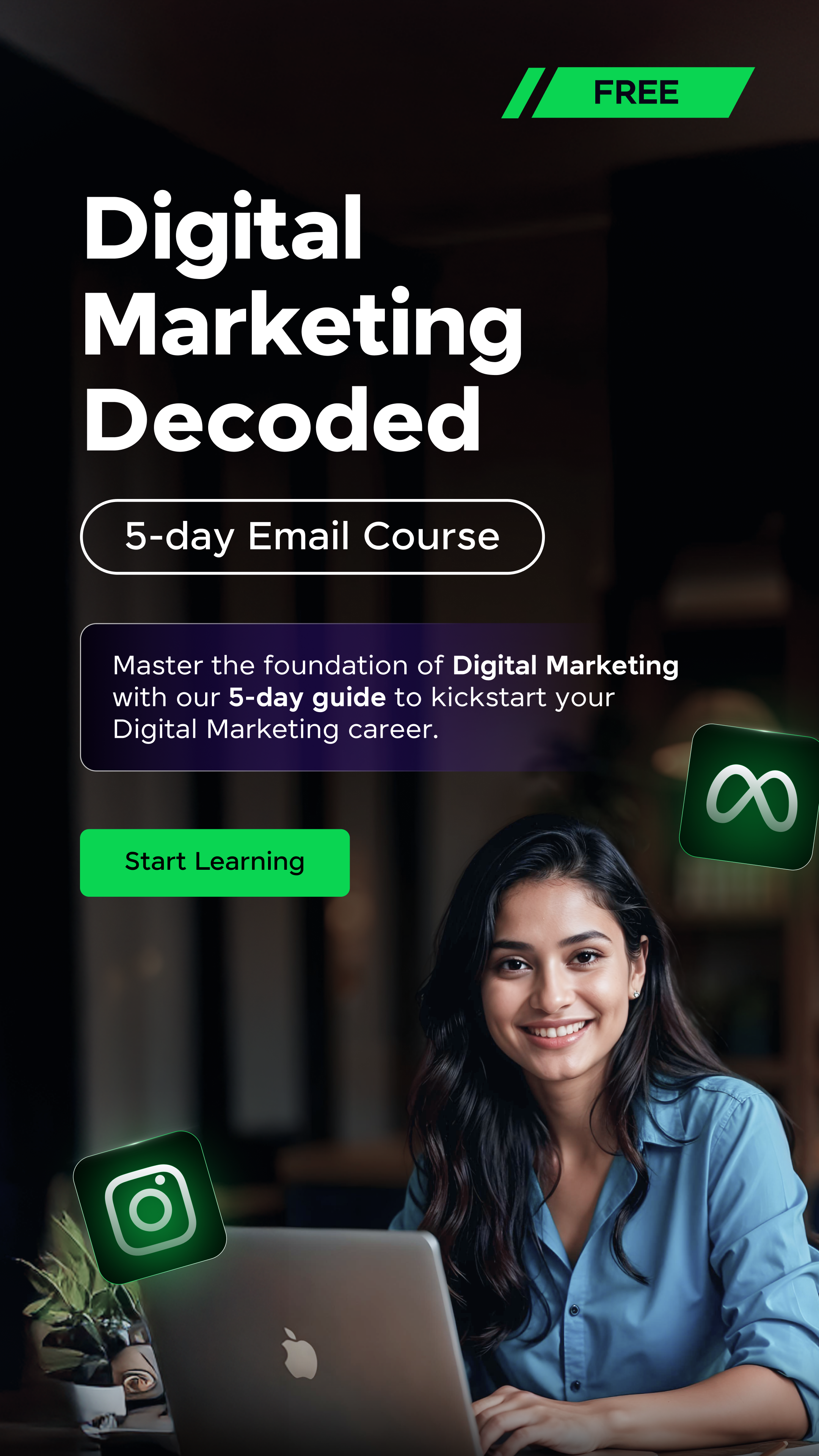

























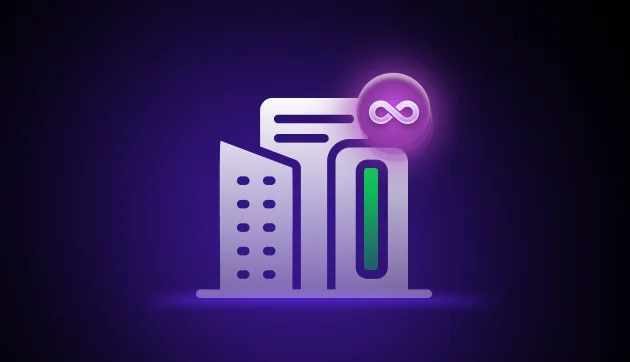
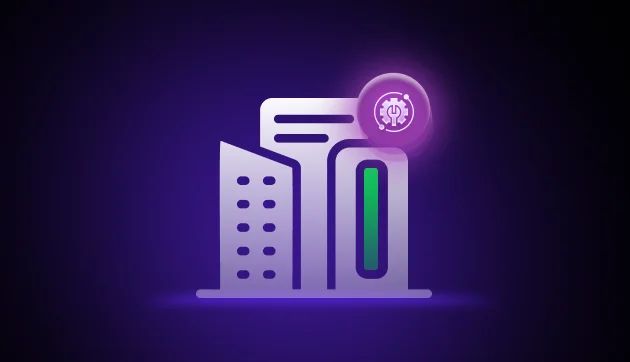






Did you enjoy this article?